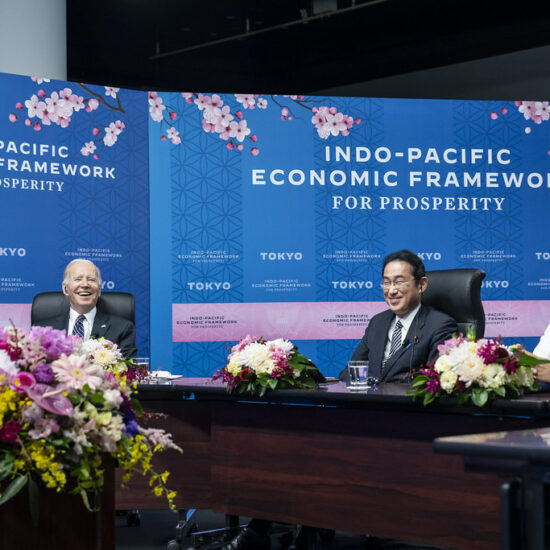
Image credit: The U.S. Army
The rapid disintegration of the Afghan government in August marked the utter failure of the state-building1 enterprise undertaken in the country by the U.S.-led coalition of Western powers. A government set up and maintained over two decades at the exorbitant cost of $143 billion2 fell apart in less than two weeks, replaced by the Taliban. The failure of that enterprise can be attributed to three interrelated and mutually reinforcing factors: first, the traditional condition of the Afghan polity and society; second, the failure of the U.S.-led coalition in creating an uncontested domain of authority; and third, the problem of legitimating an inherently secular order in a deeply religious society.
State-building aims at constructing a modern national state. The nation-state embodies the doctrine of raison d’état, an invention of European political thought in late sixteenth century which regards the state’s “perfection and perpetuation” as the chief goal of political action. Guided by this political rationality, rulers of major European states engaged in efforts to strengthen the state by moving beyond the traditional tasks of justice, army, and finance. They pursued centralization and administrative modernization. The strengthening of the state also necessitated the construction of new subjects through education and professionalization programs. Using regulatory and disciplinary devices such as modern codes, schools, and the army, European rulers engaged in ‘rational’ and ‘calculated’ intervention in the lives of their subjects3.
The final product of this complex process of political transformation was the modern nation-state, which first emerged during the French Revolution. The consolidation of the national state amounted to a transition from indirect to direct rule4—or from a “mediated society” to a “direct-access society.”5 In pre-modern polities, religious leaders, tribal chiefs, and local and regional powerholders served as intermediaries between the ruler and his subjects. With the formation of the modern nation-state, these traditional sources of authority were either suppressed or absorbed into the emerging bureaucracy of the state.
A major challenge for the American state-building project in Afghanistan was that the country had never previously experienced a transition to modern statehood. The first significant attempt at building a modern national state, which occurred in the 1920s under King Amanullah Khan, met with failure. Subsequent Afghan rulers abandoned his state-building agenda, reverting to a system of indirect rule which delegated important state functions to religious and tribal leaders. By 1970s, Afghanistan remained a mediated society, marked by the limited reach of the political center and segmental organization—major features of what sociologist Anthony Giddens has called the traditional state6. Afghan rulers had failed to pursue administrative modernization or to implement society-wide programs of education and professionalization.
The Afghan communists, who came to power through a coup in 1978, were hoping to steer Afghanistan to modern statehood using a socialist template. However, they met with a popular revolt that not even the Soviet invasion could suppress, in no small part because of the support the resistance received from Western powers and some Muslim countries in the region. The wars of 1980s and 1990s destroyed Afghanistan’s rural economy and handful urban centers as well as its modicum of state structures.
Building a modern national state in such a context was always to be a truly enormous undertaking. An American diplomat, who had arrived in Kabul in late 2001, realized that Hamid Karzai, leader of the interim authority, had “nothing to work with, no military, no police, no civil service, no functioning society.”7 Later, a U.S. commander noted that in many locations in the country, people “didn’t really understand or see a benefit to having a centralized government”; people did not have a concept of a government exercising power across the country, so “you had to prove to a lot of people why government mattered to them at all.”8
American military personnel were astonished to discover that the modern concept of law enforcement by uniformed police officers enforcing state laws was foreign to many Afghans. Dispute resolution through recourse to tribal and religious leaders was the norm. An American major said, “They have a hard time picturing what we’re trying to do with the police forces. They don’t understand how it fits into their culture.” The high rates of illiteracy caused major problems. For instance, about 80 to 90 percent of army recruits could not read or write. So, training the security forces proved a major challenge, especially since the U.S. had decided to design the Afghan army “as a facsimile of the U.S. military, forcing it to adopt similar rules, customs and structures.”9
What made that enterprise even more difficult was the fact that the American-led coalition forces never succeeded in creating an uncontested domain of authority in the country. State-building proceeded in conjunction with the war against the Taliban and other insurgent groups. In the early years, the Americans missed a couple opportunities for diplomatic engagement with the Taliban leadership. Later, defeating the insurgent group militarily proved impossible, in large part due to the support it enjoyed in neighboring Pakistan. Thus, monopoly over the use of force, a central element of modern statehood, never materialized. Constant insecurity hampered the training of security forces, the implementation of development projects, the expansion of education, and the conduct of elections. Moreover, the exercising of semi-autonomy by some local and regional power-holders in their respective localities and regions further eroded the authority of the central government.
War undermined the state-building project also by creating a situation ripe for massive corruption, especially given the U.S. military’s overreliance on contractors. The chief cause of corruption was the coalition’s reliance on international and Afghan contractors10 to transport food, fuel, and other supplies to American bases in Afghanistan. In return for safe passage, transport companies paid huge sums to local strongmen, police chiefs, and Taliban commanders. An assessment of 3,000 Pentagon contracts worth $106 billion found that 18 percent of the money ended up going to the Taliban and other insurgents, while another 15 percent was pocketed by Afghan officials and criminal groups11.
A third major issue for the state-building project was how to legitimate an inherently secular order in a deeply conservative Muslim society. The ideas, practices, and institutions encapsulated in the liberal democratic state are products of modern Western history. Under the influence of ideational and material forces that emerged in Western Europe from the late Middle Ages onwards— including the Renaissance, the Protestant Reformation, the scientific revolution, industrial capitalism, and the Enlightenment—Western European societies underwent a process of secularization, eventually culminating in a condition of modernity or secularity. The modern European state stood in sharp contrast to pre-modern polities, which (like those in European Middle Ages) were religio-political in nature12—wherein religion legitimated the prevailing socio-political order.
Central to Western modernity is what philosopher Charles Taylor has called “the anthropocentric shift”—the emergence of “exclusive humanism,” a secular notion which envisions political society as resulting from peaceful cooperation for mutual benefit among ‘rational’ and ‘sociable’ human beings. American and French revolutions turned this notion into a “modern social imaginary,” a profound shift which Taylor calls “the great disembedding.” Individuals in modern Western societies no longer see themselves as being embedded within metaphysically sanctioned hierarchical communities; rather, they regard themselves as equal members within an impersonal, egalitarian socio-politico-economic order13.
Such anthropocentrism is diametrically opposed to the prevailing religious attitudes and sentiments in the Afghan society. A lecturer at Kabul University—the country’s largest academic institution— argued in his textbook that “Islam is a divine religion with its own rules and regulations for all aspects of life…, which originate from divine revelation and do not admit any kind of revision or combination;” democracy, on the other hand, “is a name for positive law, a social philosophy and a political system produced by human mind and rooted in human ideas and whims, which the Qur’an deems as ‘ignorance.’”14 Similar views were propagated in both lay and religious educational settings across the country.
The prevalence and propagation of such beliefs caused a major legitimation crisis for the state-building project. In a study conducted in 2014, of fifty randomly selected students from Kabul University, twenty responded affirmatively when asked if armed opposition by the Taliban against the Afghan government was justified according to Islam15. In a 2018 study conducted in Kabul, Herat, and Nangarhar universities, 36 percent of the respondents agreed with the revival of the Islamic caliphate—as against 33 percent who disagreed; 85 percent of the participants believed Islamic teachings must be implemented in all areas of life16. In a 2015 survey of around 1650 members of the Afghan National Police across eleven provinces in the country, 83 percent believed armed resistance was justified against those who criticized Islam; nearly half thought that international conventions on women and human rights contradicted Islamic values17.
Thus, given the state of religious attitudes and sentiments current within the Afghan society, it is no surprise that the project of transforming the Afghan social order using a “made-in-America solution”18 led to the erection of a government whose legitimacy was challenged not only by the Taliban and other insurgent groups, but also by social actors operating under the auspices of that same government and its international backers. In short, the American state-building project in Afghanistan did not have a sufficiently large social basis for it to succeed. Nor did the Americans and their local counterparts succeed in creating an effective legitimating apparatus for their nation-building enterprise. So, it met the same fate as the modernization projects attempted in the country during the twentieth century.
These three major impediments to nation-building, among other factors, will haunt future attempts at building a national state in Afghanistan, including by the country’s current rulers, the Taliban. Assuming they have an interest in pursuing a state-building agenda, the Taliban may find it hard to create an uncontested domain of authority, partly because of their own internal divisions and partly due to the presence of competing armed actors in the country that will likely continue to challenge Taliban’s authority. The failures of previous projects of societalization, administrative modernization, and society-wide education and professionalization will make it difficult for them to build a viable state—especially, given the Taliban’s own meager knowledge of, and experience in, governance. Finally, their uncompromising ideology and their ethnocentrism will make it hard for them to build a stable basis for legitimating their rule over a religiously, ethnically, and linguistically heterogeneous population. Only time will tell if the Taliban can be successful in their own project of creating a unified Afghan nation-state where others have failed.
Dr. Ahmad Farid Tookhy is a senior fellow at the Institute for Peace & Diplomacy.
- State-building and nation-building are normally used interchangeably. The author prefers the former.
- Whitlock, The Afghanistan Papers, 30.
- For background, see, for example, Foucault, Security, Territory, Population; and Foucault, The Birth of Biopolitics.
- See Tilly, Coercion, Capital, and European States, AD 990-1992, 103–7.
- See Taylor, Modern Social Imaginaries, 156–61.
- For a discussion of the features of the traditional states, see Giddens, The Nation-State and Violence, 3–4; 35–60.
- Quoted in Whitlock, The Afghanistan Papers, 30.
- Quoted in Whitlock, 38.
- See Whitlock, 57, 66.
- “Study Says Nearly Half of Defense Spending for 9/11 Wars Went to Private Contractors.”
- Whitlock, The Afghanistan Papers, 186–87.
- See Smith, Religion and Political Development, an Analytic Study, 6–7.
- See Taylor, A Secular Age, 1–22, 146–211, 221–96.
- Quoted in a report published by Afghanistan Institute of Strategic Studies in 2019; see Kamangar, “Religious Radicalism in the Higher Education of Afghanistan [in Persian],”
- Zaman and Mohammadi, “Trends in Student Radicalization across University Campuses in Afghanistan,” 24.
- Kamangar, “Religious Radicalism in the Higher Education of Afghanistan [in Persian],” 52.
- Zaman and Khalid, “Trends of Radicalization among the Ranks of the Afghan National Police,” 10.
- Whitlock, The Afghanistan Papers, 36.










